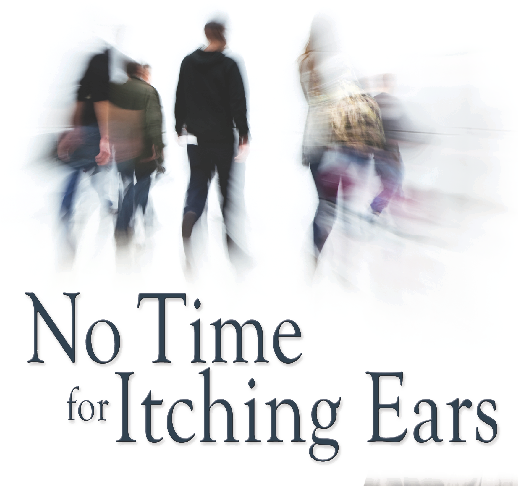 The "Group B" Republicans Prevail at the State Convention
The "Group B" Republicans Prevail at the State Convention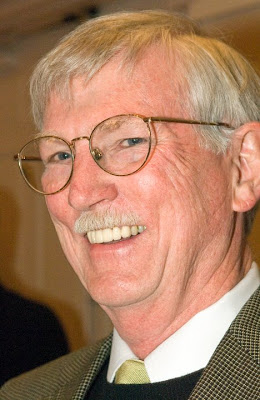
Our 5-part series on the definitive story of the Republican Party of New Mexico revealed the motivations behind what we have called the "Group B" Republicans in New Mexico—those whose main goal is the pursuit of what they regard as "power and influence." ("Group A" Republicans are focused on winning races against Democrats and trying to gain majorities in the legislature.)
The Group B Republicans have a long, well-established record of spending big money to attack other Republicans in primaries while spending nothing to take on Democrats.¹ This spring they created a proxy war aimed at Governor Martinez and what they  perceive to be her "henchperson"² of the moment, Jay McCleskey.
perceive to be her "henchperson"² of the moment, Jay McCleskey.
Since they could not (and probably would not) arrange a direct electoral confrontation with the governor, they used as their substitute target National Committeeman Pat Rogers.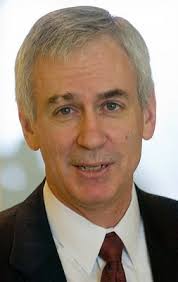
Rogers found himself caught in the crossfire between former state chairman Harvey Yates and the governor/McCleskey. The Group B All-stars, aka The Yates Players prevailed easily with Harvey Yates garnering 283 votes to Rogers' 195.
¹As just one example, in 2008, one of the biggest Yates supporters, Mark Murphy of Roswell, spent $550,000 of his own money (out of a total of $670,000 he raised) to attack incumbent conservative Republican state legislators. Meanwhile he spent nothing (0 dollars) to take on a single Democrat in the legislature, or anywhere else. (In 2012, Murphy continued the process, joining Yates in supporting 34-year incumbent Democrat Tim Jennings over a young conservative Republican, and in 2014, a Murphy PAC did the same to another conservative Republican incumbent.)
²We try to use non-sexist terminology.
The Players
In our previous series we touched on what might be termed "awkward motivations" or certainly embarrassing rationales (for mature people at least) of those who have decided to focus their negative attention on Republicans, and especially the governor.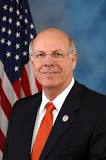
In the event, our analysis of who all was involved in the Yates Players/Group B Republican effort proved to be 100% accurate. These are the forces who lined up together in their attack on Governor Martinez which defeated Rogers:
- Congressman Steve Pearce
- Albuquerque "progressive" City Councilman Pat Davis
- Former state chair John Billingsley
- Blogger Joe Monahan
- Roswell oilman Mark Murphy

- Yates himself
- Doug Turner
- Andrea Goff
- Tom Tinnin
- Anissa Ford
- ProgessNowNewMexico
- Rocky Galassini
- State Representative Rod Montoya
Probably no one worked harder to "beat the governor," except perhaps Yates himself (though that would be a close call) than Congressman Steve Pearce. Pearce was everywhere — on the phone, sending out hundreds of emails, snail mail letters, buttonholing Republicans (especially in southeastern NM), composing ads, and tirelessly endorsing Yates at every turn.
Rank and File Republican Voters v. Delegates and Naysayers
Many Republicans—including what might be called "average Republicans"— have contacted us about our series last week. It is important to make a distinction here. When we refer to average Republicans we are talking about those who come from the ranks of the 380,460 registered Republicans in New Mexico. Many are interested in politics, and vote, but are not interested enough to go to county meetings, let alone try to become delegates to a state convention.
These are almost entirely what we call Group A Republicans—they aren't out to "get something out of" their involvement in the political process, they mainly just want to see Republicans win elections. Emails from those folks indicate mostly bewilderment at the shenanigans of the Group B Republicans. (One wrote this morning about how eerie it was listening to Donald Trump on the news this morning because, she said: "He sounded like Mr. Yates.")
Delegates, unfortunately, can have amongst them a disproportionate number of naysayers, cranks, and people wearing funny hats, and as often as not, people willing, even eager, to have itching ears. After all, grievance is more or less the wave of the present.
Both groups — the 380 thousand average Republicans and the one thousand or so active enough to weave in and out of the "potential delegate" pool — would do well to take a long hard look at those who lined up with Yates and the naysayers, and see exactly what they "accomplished."
Successful attack on Governor Martinez
True. They accomplished that. But what does that mean in context?
We've been observing New Mexico politics for 54 years, and writing about it for 40 years. There have been six Republicans elected governor since 1930, and we've had one hugely prominent US Senator, along with several popular congresspersons.
How many of those individuals even gave a thought of putting together an effort to capture the state legislature? Let's look: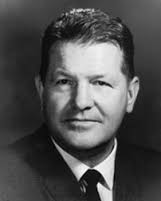
- Edwin L. Mechem, Governor 1950-54, 56-58, 60-62. "Big Ed" was gregarious, personally popular and won singular races for a decade, while NO ONE else was winning statewide, or in congress. It was all he could do to get himself elected (he was 4-3, losing twice for governor and once for US Senator) and had no ability, if he had the desire, to try to help others.
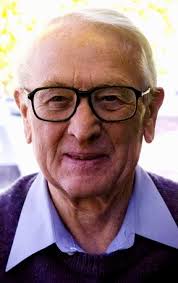 David F. Cargo, Governor, 1966-70. His nickname, "Lonesome Dave," says it all.
David F. Cargo, Governor, 1966-70. His nickname, "Lonesome Dave," says it all.
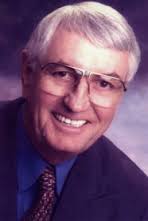 Garrey E. Carruthers, Governor, 1986-90. The last of the single 4-year term governors. To be fair, he had little incentive for putting together a majority in the legislature, as his time was limited.
Garrey E. Carruthers, Governor, 1986-90. The last of the single 4-year term governors. To be fair, he had little incentive for putting together a majority in the legislature, as his time was limited.
- Gary E. Johnson, Governor, 1994-2002. A libertarian with little interest in state government and no interest at all in Republican Party politics, he was entirely indifferent to legislative elections and felt his 800 or so vetoes were all the check he needed on the
 Democrats' power.
Democrats' power.
- Pete Domenici, US Senator, 1972-2008. At his peak of power and prestige, "Saint Pete" was almost certainly the most popular elected official in the history of New Mexico,
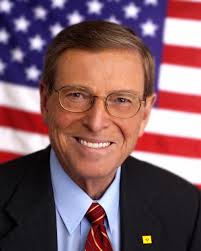 1912 to present. He knew that, and he knew that making it about him (rather than party) was a key to getting as much as 73% of the vote. He was famous for not bringing anyone along for the ride—certainly not the legislature. This is not a criticism. We understand that—and there is little incentive for any US Senator to try to alter the legislature with whom he does no work and has little interaction. Looking at him along with all the other governors is just a matter of putting everything in perspective. (He did make one exception, for Heather Wilson, and in so doing earned the permanent enmity of the naysayer/nitpicker crowd—the same one behind the Yates effort.)
1912 to present. He knew that, and he knew that making it about him (rather than party) was a key to getting as much as 73% of the vote. He was famous for not bringing anyone along for the ride—certainly not the legislature. This is not a criticism. We understand that—and there is little incentive for any US Senator to try to alter the legislature with whom he does no work and has little interaction. Looking at him along with all the other governors is just a matter of putting everything in perspective. (He did make one exception, for Heather Wilson, and in so doing earned the permanent enmity of the naysayer/nitpicker crowd—the same one behind the Yates effort.)
Susana Martinez Changes the Entire Approach
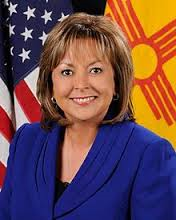 Susana Martinez, Governor 2010-18. After getting elected, Martinez set about to accomplish what NO ONE else in the history of the state had ever even attempted to do: win control of the legislature. Looking at campaign finance reports, and open sources such as FollowtheMoney.org., we can see that Martinez raised millions of dollars (it appears $4 to $5 million) in the 2012 and 2014 cycles to try to gain (or hold) the 16 competitive seats in the house and the 10 theoretically competitive seats in the senate.
Susana Martinez, Governor 2010-18. After getting elected, Martinez set about to accomplish what NO ONE else in the history of the state had ever even attempted to do: win control of the legislature. Looking at campaign finance reports, and open sources such as FollowtheMoney.org., we can see that Martinez raised millions of dollars (it appears $4 to $5 million) in the 2012 and 2014 cycles to try to gain (or hold) the 16 competitive seats in the house and the 10 theoretically competitive seats in the senate.
Organizations such as SusanaPAC, Reform New Mexico Now, and Advance New Mexico Now produced over 400 pieces of mail, hundreds of radio and TV ads in targeted races. No one even came close to raising one-tenth of the amount the governor did.
Yes, Harvey Yates can be found donating money, but very little of it went into targeted races. The bulk (of his relatively small effort) went to Republicans who were running in overwhelmingly Republican districts—in other words the kinds of contributions that gather “chits” rather than gather seats.
(In the one targeted seat Yates did play in, he gave to 34-year incumbent Democrat Senator Tim Jennings, rather than the young conservative Republican).
Yates supporter Mark Murphy of Roswell, is typical of the Group B Republicans: Almost no donations in targeted districts 2012 and 2014 (to Republicans at least). Though there were “chit” donations. 
Like Yates, Murphy poured thousands of dollars into the Jennings race. This was actually keeping up a tradition: In 1996 he had donated to Democrat incumbent State Representative Barbara Casey (D-Roswell) even as she was being challenged by a conservative Republican woman from Dexter (who upset Casey by 5 votes).
The "Average Republican Voter" (and reader of this column) Looks at Last Saturday
Regular Republican voters, as well as delegates who may have been goaded into going along with the above-listed crowd, will have to take a long, hard look at what was decided last Saturday. Examine those who lined up with Yates and whose motive was to "attack the governor."
They won. But to what end? They attacked the very first Republican governor in the history of the state to work for a majority in the legislature—the first to Republican leader to risk her own political capital. We cannot tell you how extremely rare it is — not just in New Mexico, but all over the nation —for a politician to risk his or her personal political capital.
What does she get for it? The enmity of the Group B Republicans.
Why? Multiple reasons, dating back to 2002. But none of them are good reasons, mature reasons. And this is important: They would not be reasons that ring legitimate to the 380,000 Republican voters, but rather only to the few "insiders" with itching ears, and cranky dispositions.
No one can seriously think that Pat Davis, or ProgressNowNewMexico really have the best interests of the Republicans at heart. The same must be said about blogger Joe Monahan, whom the anti-Rogers (actually anti-Martinez) crowd has used throughout, as Monahan is a constant (sometimes daily) anti-Republican source of Democrat Party talking points.
We can see that this is going to be another multi-part series
But we will leave you with the first example of the growing evidence of the dirty campaign run by the Group B crowd.
 The Christmann apology: https://goo.gl/FjTFzU
The Christmann apology: https://goo.gl/FjTFzU
One of the "endorsers" of Harvey Yates, a Mr. Charles Christmann, felt so used by the Yates Campaign that he took to YouTube to offer a video apology to Pat Rogers. NMPJ interviewed Mr. Christmann today, and he confessed to not having written the "endorsement letter" sent out by Yates.
He did say he knew who did write it, but declined to release their names. Perhaps they will step forward. Many have speculated that it may have been State Representative Montoya, as he is the object of some ire we have heard from legislators who never actually saw the letter in which they purportedly endorse Mr. Yates.
Mr. Christmann rather generously claims not to believe that Yates wrote the letter himself. This of course raises the question: Did Yates even have control of his own campaign? Christmann, demurred on that question, hesitating and then declining to answer.
Questions for Yates
So NMPJ then forwarded the following inquiry to Harvey Yates.
Mr. Yates
On May 16, you sent out a letter from a Mr. Charles Christmann which strongly attacked then-National Committeeman Pat Rogers.
Mr. Christmann has since posted a video (shown here: https://goo.gl/FjTFzU ) which apologizes to Mr. Rogers and disavows the letter you sent out.
 Specifically he calls your email “atrocious,” says he did not write it, that it “should never have been created and should never have gone out.”
Specifically he calls your email “atrocious,” says he did not write it, that it “should never have been created and should never have gone out.”
This is significant specifically in regard to you, Mr. Yates, because you have taken a very high profile position regarding what you have called “negative campaigns,” “half-truths,” and “misleading ads.” You have pointedly condemned them, as well as the “tone and content” of the very thing you have your name on—and which Mr. Christmann says he had no part in.
In fact, Mr. Christmann doesn’t even give you credit for a “half-truth” (or quarter or eighth). He is essentially calling you out as having sent out a false letter—and you also sent out a mailer with the exact wording. Our questions to you are:
- Who wrote the letter to which you affixed Mr. Christmann’s name?
- Did you write the letter?
- Did you have any documentation to show that Mr. Christmann said any of the things in the letter you sent out?
It’s important to know all these things, given your public pronouncements.
New Mexico Political Journal
Given the way Yates conducted his campaign, which, it must be noted any dispassionate observer, cannot be called ethical in any sense of the word, we do not actually expect a reply.
In Coming Issues, we will discuss the multi-faceted aftermath of the Quadrennial Convention and continue discussing the current state of the Republican Party in New Mexico:
- Harvey Yates post-convention letter: Why he confirms the points we made about his motivation
- There will be little change: Group A Republicans will continue working for a majority. Group B will keep doing what they do.
- How the Dividers Form Pro-Democrat Alliance: Why Trump's Speech is exactly the same as Yates'
- The disconnect between party "activists" and actual rank-and-file Republican Voters.
- Pearce weighs in with outright lie? Did Steve Pearce tell a lie to House Counsel's Office? It appears he did. Consequences?
- Legislators: Living up to Prior Assessments? Character Questions: Biting the hand that feeds you.
- Why some say 112 names picked at random from the Voter File would produce a legislature with a higher average IQ.
- Yates' mention of Rep. Zach Cook: Why Cook shouldn't come within a 10-foot pole of the great divider.
- Yates' Announced Surrender to Democrats: Before we know the outcome of the fall elections
- 2002: The Walter Bradley-John Sanchez Hangover
- 2012: The treatment of Angie Spears: Mean People Who Won't Let Go
- Your Mail: Great Insights from Activists Witnessing all of this, first hand
Email us with your feedback, comments, questions and ideas.
Intelligent Political Discourse—for the Thoughtful New Mexican

